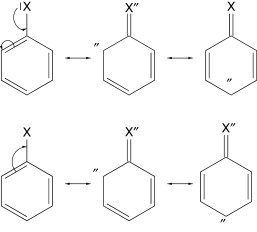
ABSTRACT:
In this article, we will discuss in detail the fascinating phenomenon of inductive effect. We will delve into the concept, explore its significance, and examine its various applications in different fields. By understanding the intricacies of the effect, we can gain valuable insights into the behavior of molecules and learn how it influences their reactivity and chemical properties. So, join us as we embark on this intriguing journey into the world of the inductive effect.
INTRODUCTION:
In organic chemistry, the inductive effect plays a crucial role in determining the reactivity and stability of organic compounds. It refers to the transmission of electron density through sigma bonds, resulting in the polarization of the electron cloud. This article aims to provide a comprehensive understanding of the effect, its mechanisms, and its significance in various chemical reactions.
MECHANISM OF INDUCTIVE EFFECT:
This effect occurs due to the electronegativity difference between atoms in a molecule. Electronegative atoms, such as oxygen, nitrogen, and halogens, have a higher affinity for electrons, causing them to pull electron density towards themselves. This creates a partial positive charge on the adjacent carbon atom, known as an electron-withdrawing group (EWG), and a partial negative charge on the electronegative atom.
Conversely, atoms with lower electronegativity, such as carbon and hydrogen, have a lower affinity for electrons. As a result, they donate electron density towards adjacent atoms, creating a partial negative charge on the carbon atom, known as an electron-donating group (EDG), and a partial positive charge on the adjacent atom.

TYPES OF INDUCTIVE EFFECT:
This effect can be classified into two types: the +I effect and the -I effect.
1. POSITIVE INDUCTIVE EFFECT:
The electron-donating groups (EDGs) exhibit the +I effect, where they donate electron density towards the adjacent carbon atom. This effect stabilizes the positive charge on the carbon atom, making it more reactive. Examples of EDGs include alkyl groups (-CH3), alkoxy groups (-OR), and amino groups (-NH2).
2. NEGATIVE INDUCTIVE EFFECT:
The electron-withdrawing groups (EWGs) exhibit the -I effect, where they withdraw electron density from the adjacent carbon atom. This effect destabilizes the positive charge on the carbon atom, making it less reactive. Examples of EWGs include halogens (-F, -Cl, -Br, -I), carbonyl groups (-C=O), and nitro groups (-NO2).

SIGNIFICANCE OF INDUCTIVE EFFECT:
This effect plays a crucial role in various chemical reactions, including nucleophilic substitution, electrophilic addition, and acidity/basicity of organic compounds.
1. NUCLEOPHILLIC SUBSTITUTION:
It influences the reactivity of carbon atoms in nucleophilic substitution reactions. Electron-donating groups (EDGs) increase the nucleophilicity of the carbon atom, making it more susceptible to nucleophilic attack. Conversely, electron-withdrawing groups (EWGs) decrease the nucleophilicity of the carbon atom, making it less reactive.
2. ELECTROPHILLIC ADDITION:
It also affects the reactivity of carbon atoms in electrophilic addition reactions. Electron-donating groups (EDGs) stabilize the positive charge on the carbon atom, making it more susceptible to electrophilic attack. On the other hand, electron-withdrawing groups (EWGs) destabilize the positive charge, making it less reactive.
3. ACIDITY AND BASICITY:
It influences the acidity and basicity of organic compounds. Electron-withdrawing groups (EWGs) increase the acidity of a compound by stabilizing the negative charge on the conjugate base. Conversely, electron-donating groups (EDGs) decrease the acidity by destabilizing the negative charge.
CONCLUSION:
The inductive effect is a fundamental concept in organic chemistry that explains the transmission of electron density through sigma bonds. Understanding the this effect is crucial for predicting the reactivity and stability of organic compounds in various chemical reactions. By recognizing the electron-donating and electron-withdrawing groups, chemists can make informed decisions about reaction mechanisms and design more efficient synthetic routes.
REFERENCES:
Clayden, J., Greeves, N., & Warren, S. (2012). Organic Chemistry. Oxford University Press. https://www.chemcome.com/wp-content/uploads/2020/11/Organic-Chemistry-by-Jonathan-Clayden-Nick-Greeves-Stuart-Warren-z-lib.org_.pdf
March, J. (2013). Advanced Organic Chemistry: Reactions, Mechanisms, and Structure. John Wiley & Sons. https://rushim.ru/books/mechanizms/march6ed.pdf
Smith, M. B., & March, J. (2007). March’s Advanced Organic Chemistry: Reactions, Mechanisms, and Structure. John Wiley & Sons. https://rushim.ru/books/mechanizms/march6ed.pdf


